Hotel Woodruff, Another Otis Wheelock Creation Post 1849 Great Fire
Built by one of Watertown’s most influential pioneers, Norris M. Woodruff, the Hotel Woodruff became perhaps the defining accomplishment of many that the industrious settler’s legacy would be renowned for.
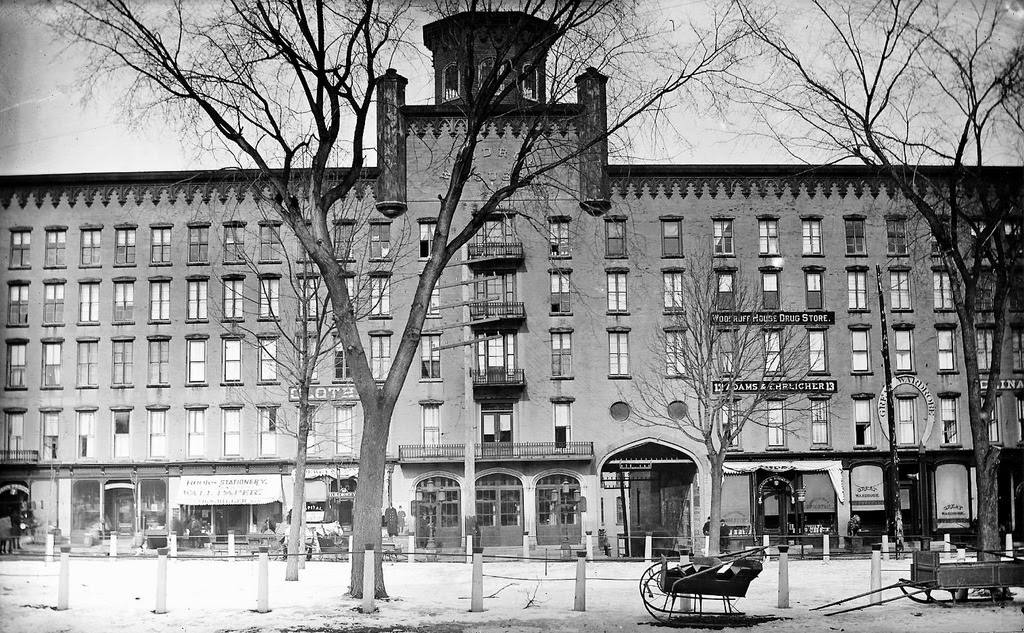
Born in 1792 in Hartford, Conn., Woodruff came with his father to LeRaysville, N.Y., in 1803. The town itself would, in later years, be claimed by the U.S. Government as part of the Pine Camp (now Fort Drum) expansion. The LeRay Mansion, which still stands on Fort Drum today, by some accounts, was originally constructed about the time of the Woodruffs’ arrival to the area.
As Joel H. Monroe’s Through Eleven Decades of History: Watertown, A History from 1800 to 1912 noted with regards to Woodruff’s life a mere ten years later—
A boy of twenty-one with one hundred dollars capital, saved from a small farm wage, furnished the means for him to embark with a horse and cart as a tin peddler in a country with bad roads and sparsely settled. Yet he prospered and saved money from the round of barker and exchange of goods among the farmers. He was not of strong physique, but this life on the peddler’s cart brought both health and profit.
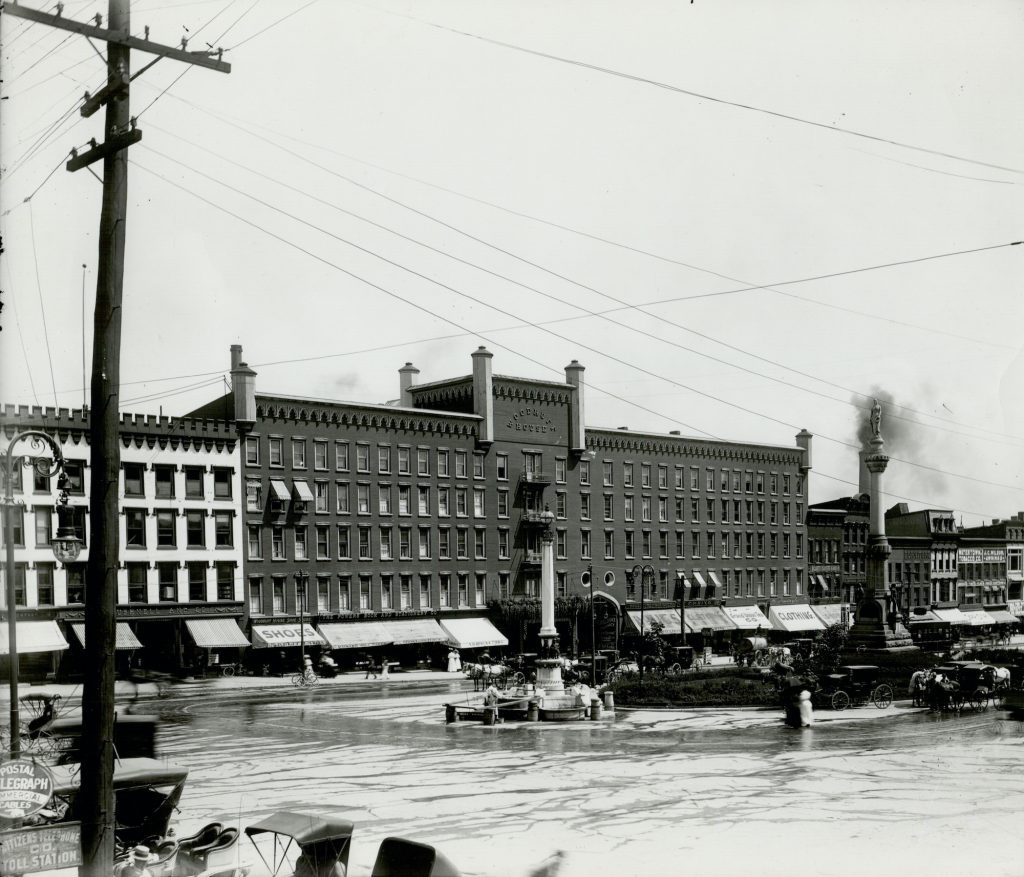
After settling in Watertown, Woodruff established a tinware manufactory and a hardware store, but continued to apply himself with efforts to grow both business and profit. Before long, he became a stockholder in banks and eventually held the rank of President of the Jefferson County Bank for many years.
After the great fire of 1849 destroyed a great portion of Downtown Watertown, including the original Woodruff House, Norris Woodruff teamed with Otis Wheelock, architect of many of Watertown’s buildings in that era, including the Watertown Baptist Church, to build what became known as Hotel Woodruff.
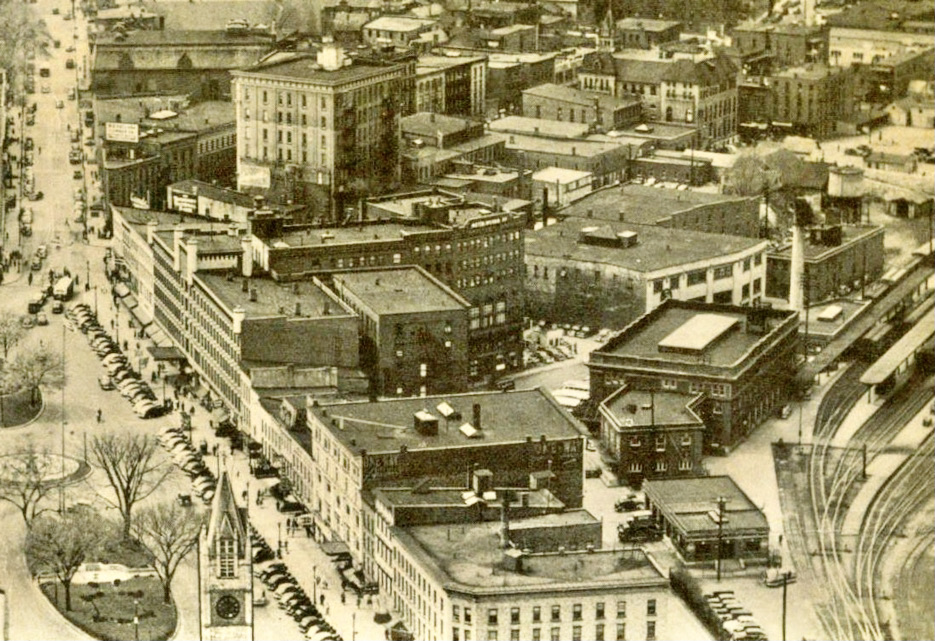
Initially constructed with 80 rooms, The Woodruff House attracted many illustrious visitors throughout its history, including Susan B. Anthony (Dec. 23, 1870) and Ulysses S. Grant (August 2, 1872), who later visited George Pullman’s summer home in the Thousand Islands before his Castle Rest was built.
With the Watertown Train Station situated directly behind the Woodruff House, travelers had easy access to the hotel. Many coming from downstate to visit summer homes or the influx of large hotels in the Thousand Islands regarded The Woodruff as one of the grandest in New York State. With its grand dining rooms and facilities, others believed it rivaled the Waldorf Astoria.
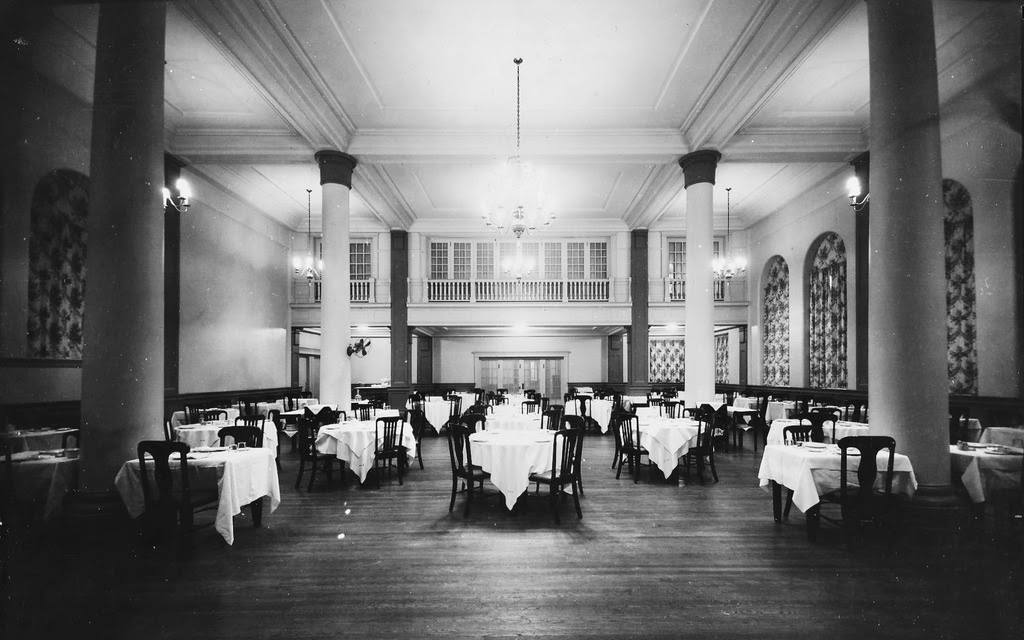
Though Norris Woodruff lived for only several more years, passing away in 1857, his name was synonymous with Watertown’s Public Square and Hotel Woodruff, which stood for another 119 years.
A Civil War Incident
The following excerpt is from Monroe, Joel Henry. Through eleven decades of history: Watertown, a history from 1800 to 1912, pages 188-190
In 1864 an exciting incident occurred in town which brought into action this body of United States troops against another squad of troops from Sackets Harbor. These troops from the Harbor had been ordered to Oswego and had several hours’ wait in Watertown before the train for that place. The sergeant and soldiers meanwhile got boisterously drunk while the Lieutenant was asleep in a room at the Woodruff House.
During their carousal an old man entered the hotel, whereupon the sergeant and the soldiers set upon him and brutally mistreated him. A fearless and manly man by the name of Alexander Neal, undertook to protect the old man from the abuse and rough handling of these drunken troops. This so incensed the sergeant that he ordered one of his soldiers by the name of Patterson to get his gun and shoot Neal. Patterson, therefore, went to the station, got his gun and returned to the Woodruff House and upon the second order to shoot, he put a bullet through Neal’s heart.
There was intense excitement in town on account of this act, and Fred Emerson being provost marshal, took immediate steps to have the men taken into the custody of the law. The sergeant and troops meanwhile had taken rendezvous in the station with the threat that all who approached would be shot.
At this juncture the invalid corps of U. S. troops were called into action. They marched to the station with their arms in charge position. This cowered the sergeant and his fighting soldiers, and so the sergeant and Patterson were arrested and locked in the county jail. They were later tried in Watertown and convicted. The sergeant was sentenced to three years in prison while Patterson got a life sentence. There are many now living who remember this unhappy affair.
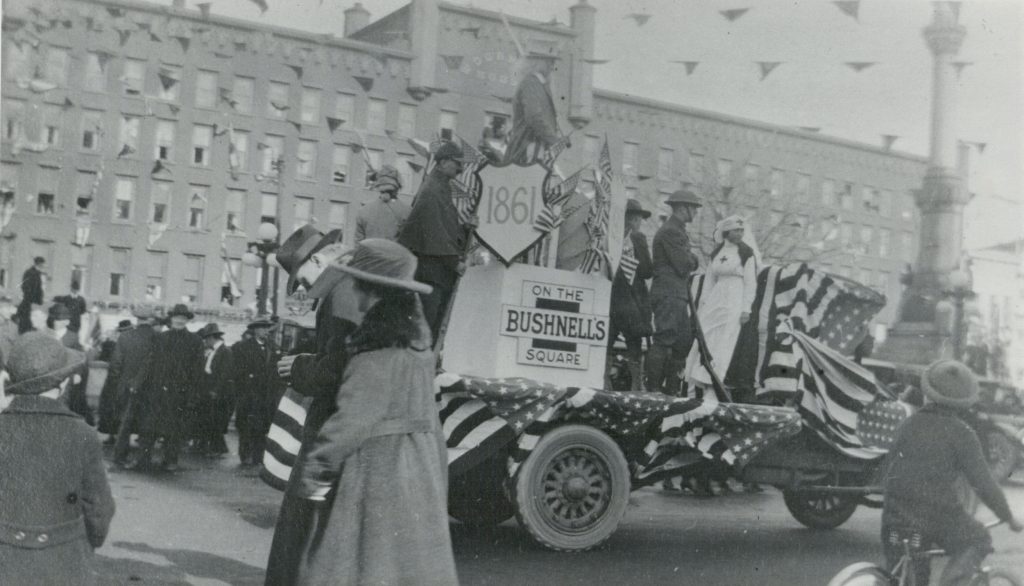
Expansion in the 1920s and “The New Woodruff”
In the early 1920s, the Woodruff Hotel underwent significant expansion, bringing an additional 210 rooms to its total. The occasion was marked by a full-page advertisement in the Watertown Daily Times by prominent citizen J. B. Taylor, who, not quite a decade earlier, lived at Sterling Place for a short time and opened its pool to the public, along with Hotel Woodruff’s Managing Director Frank C. Moore:
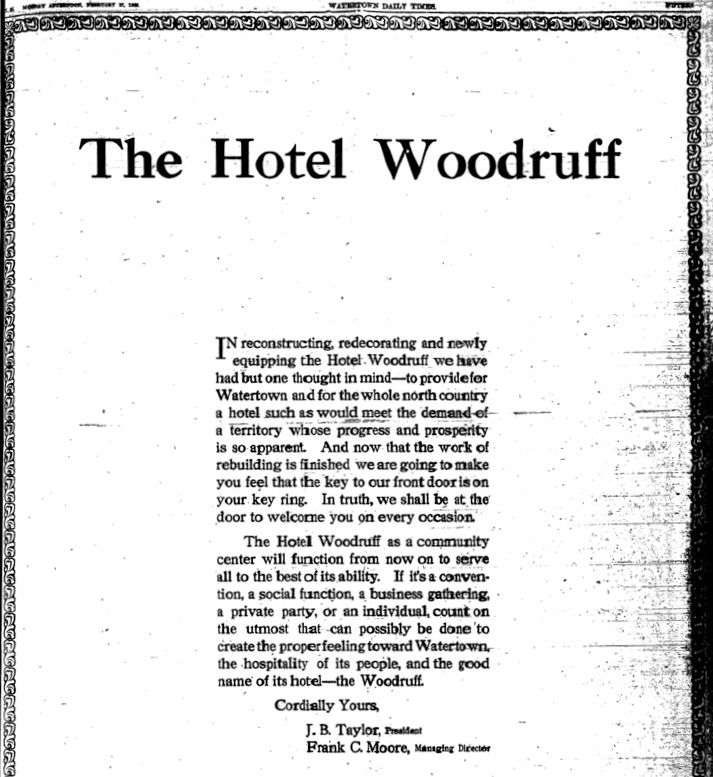
Over the years, Hotel Woodruff was a pillar in the community’s social scene, often the gathering place for celebrations such as Victory Day to mark the end of wars, or hosting the State Firemen’s Convention in 1910. Many of Watertown’s finest stores could be located on its premises over the years, from Avon Shoes, Nugents, Ligget’s Rexel Drugs (a forerunner to Kinney’s Drugs), Mangel’s, Mason’s, and Fanny Farmer, just to name a few.
By the 1950s, the country’s love of the automobile and the freedom to travel had already been in full swing for some time. As a result, the creation of the interstate had begun in New York, foreshadowing the end of an era for Hotel Woodruff. By the late 50s and early 60s, passenger traffic via train had tapered off to the extent that it was no longer viable to continue stops to Watertown. Finally, in 1962, another nail in Hotel Woodruff’s coffin was hammered when the train station was demolished.
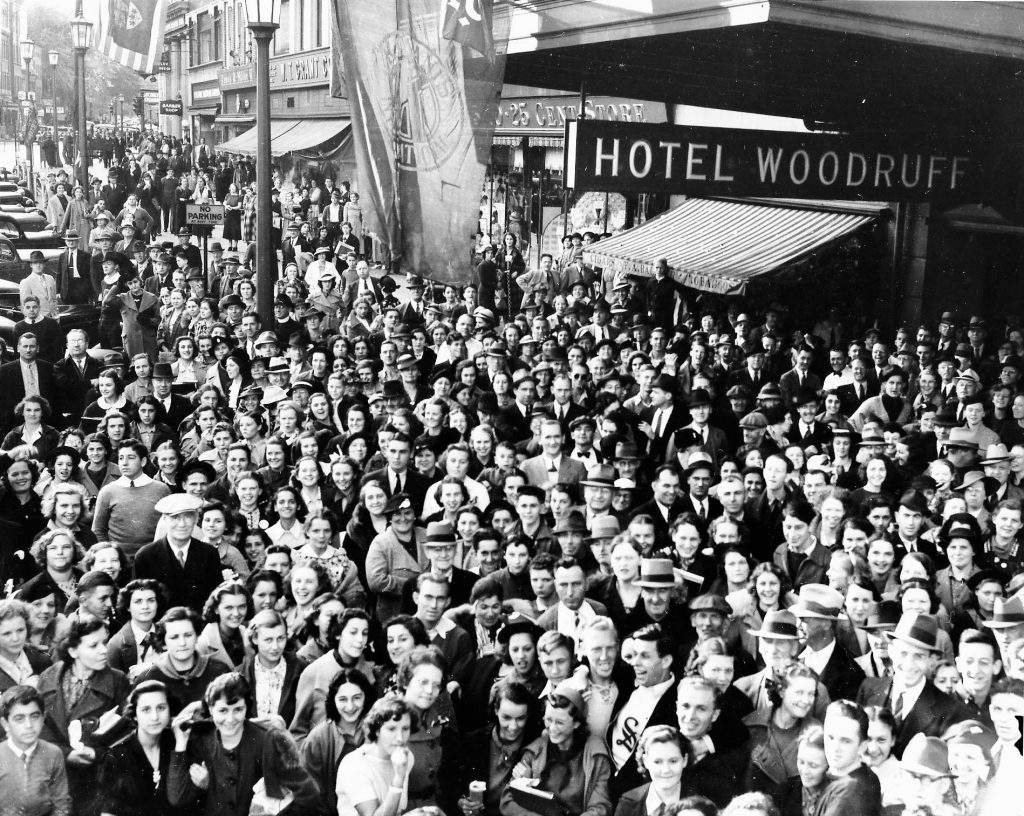
Also, a factor in the hotel’s decline was the building of modern hotels in Watertown, such as the Carriage House Inn on Washington Street and the Ramada Inn on Outer Arsenal Street. Perhaps most importantly, the rising costs of operating and maintaining an antiquated building, 120 years old by 1971. The costs for heating a structure the size of the Hotel Woodruff, now predominantly a residential hotel that was far from its capacity, became cost-prohibitive.
Without the capital to invest in improvements, Hotel Woodruff closed its doors for good in 1974. Without initiatives to repurpose the building for another use, it would sit vacant for two years before the city bid farewell with a wrecking ball to one of its longest-standing icons in 1976. It should be noted that, fortunately, the owners of Hotel Woodruff paid for its demolition, not city taxpayers, who have, in recent years, had to foot the bill for some of the increase in “zombie properties.”
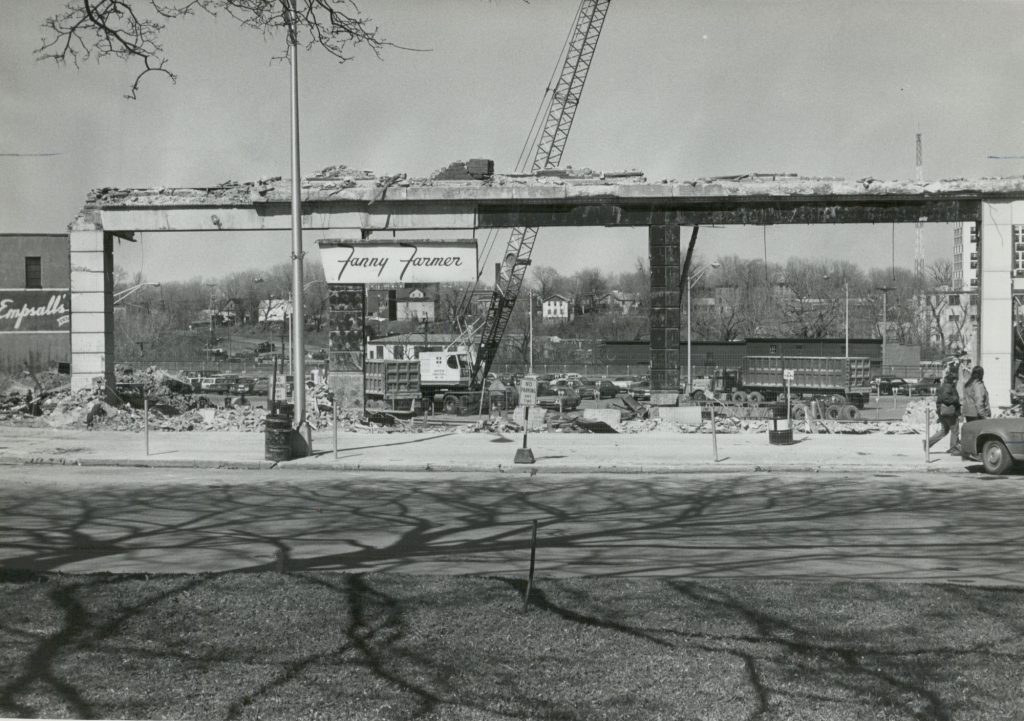
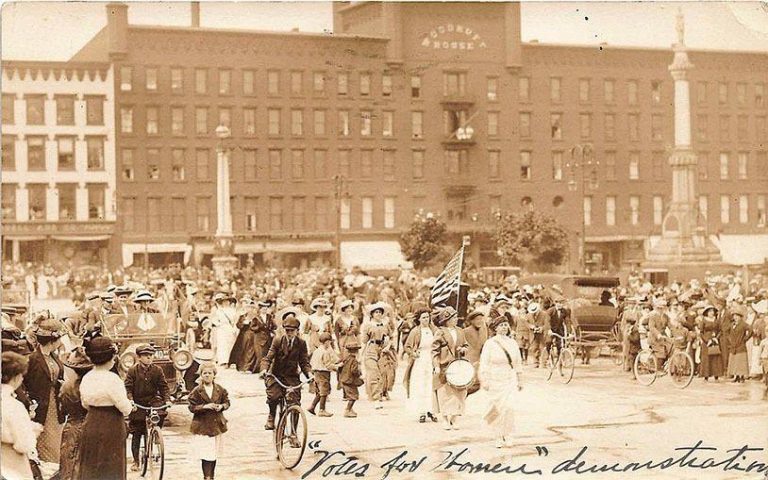
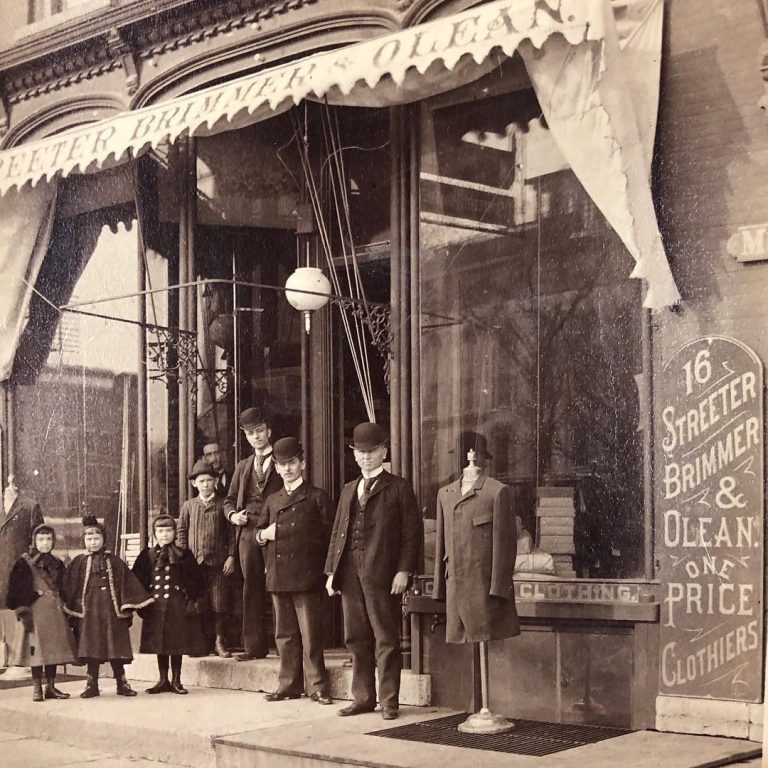
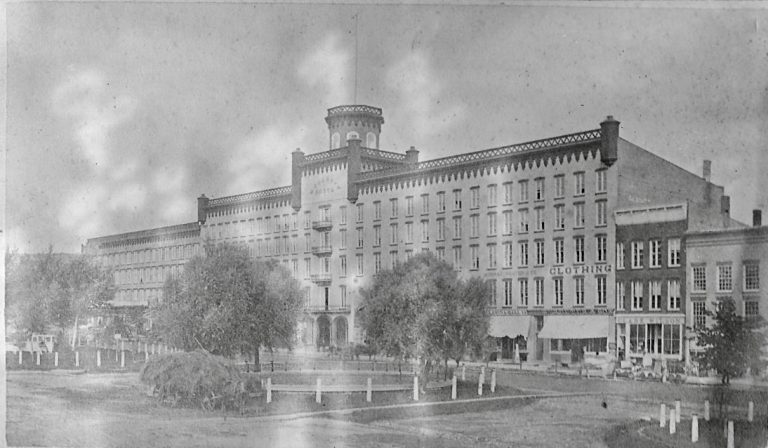
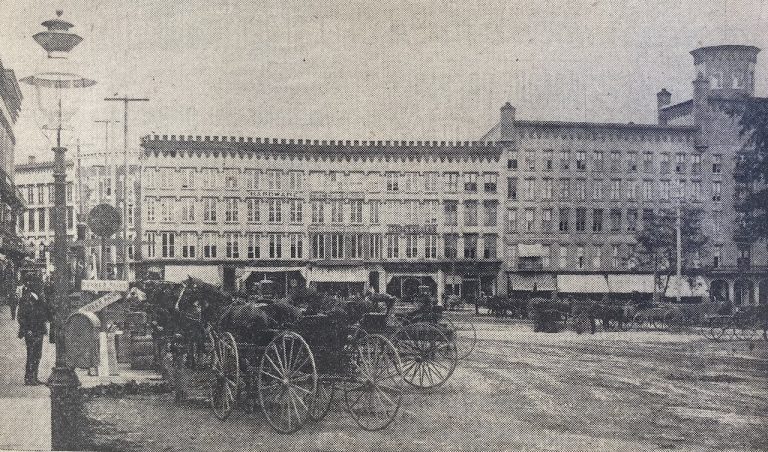
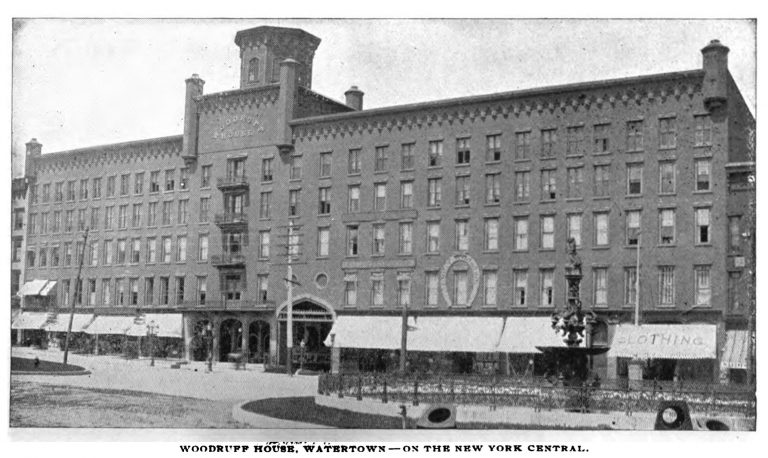

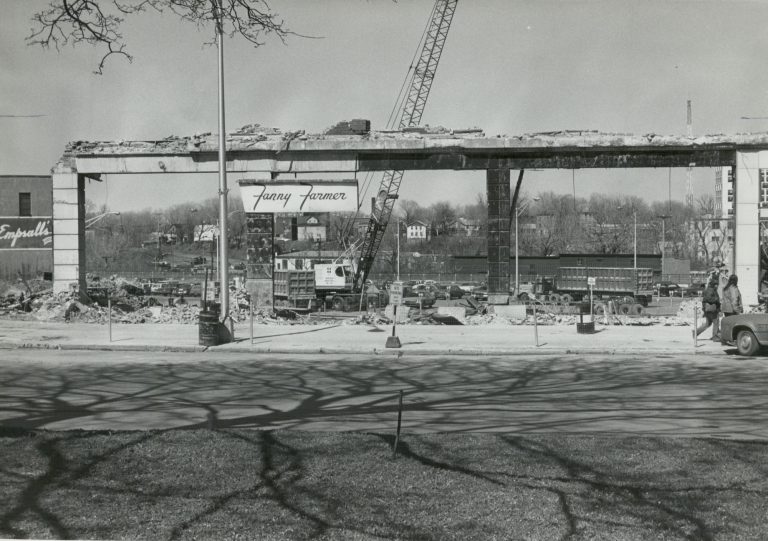
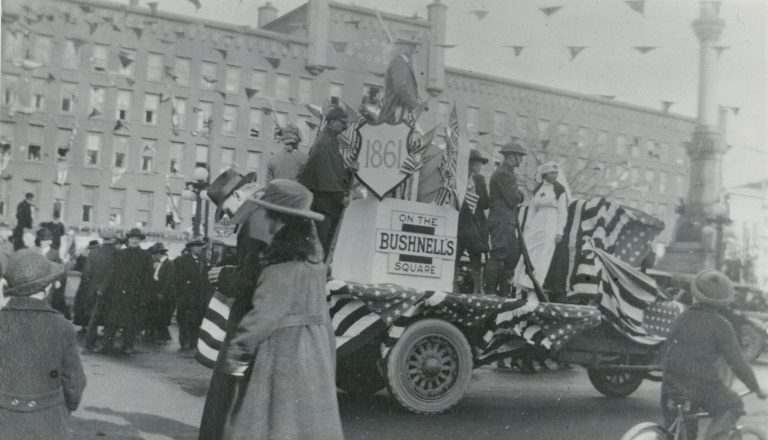
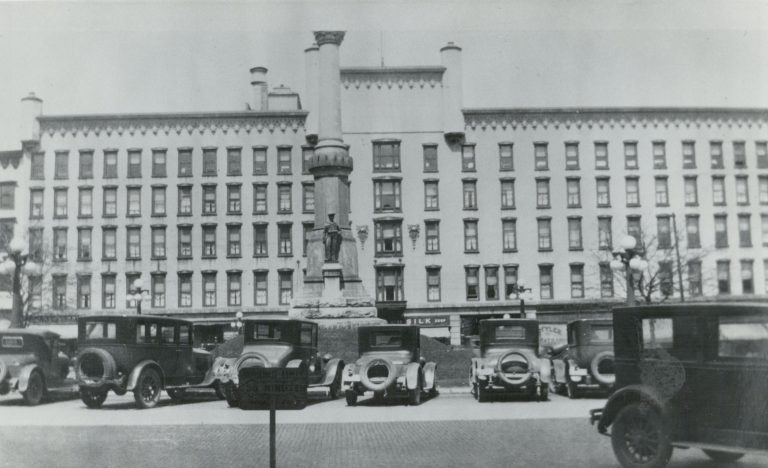
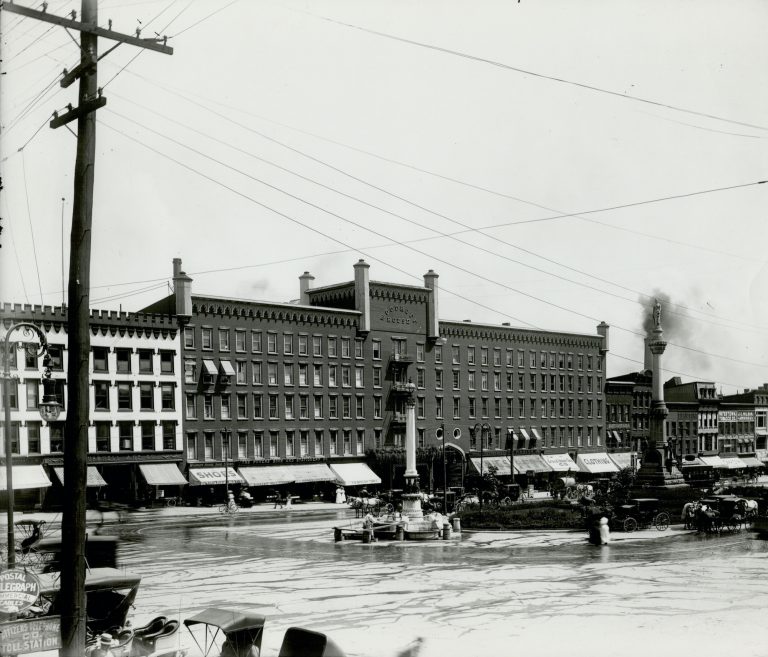
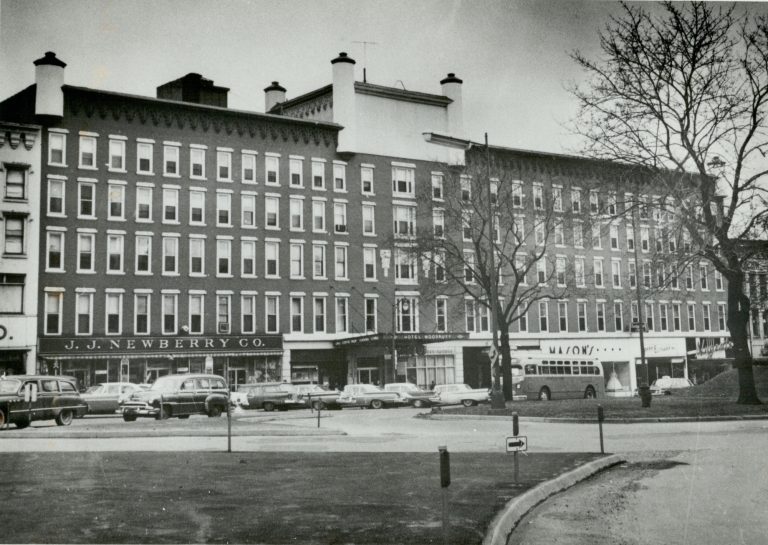

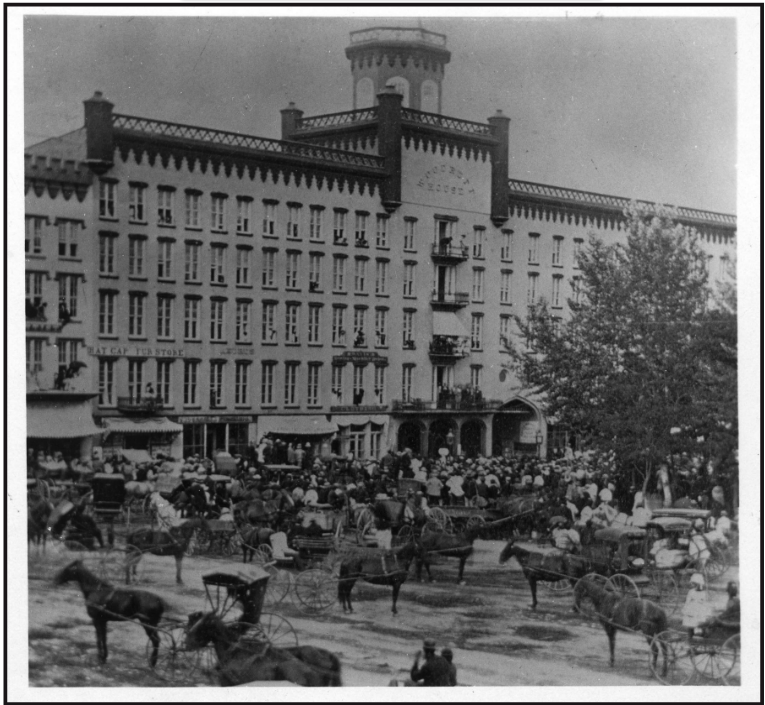
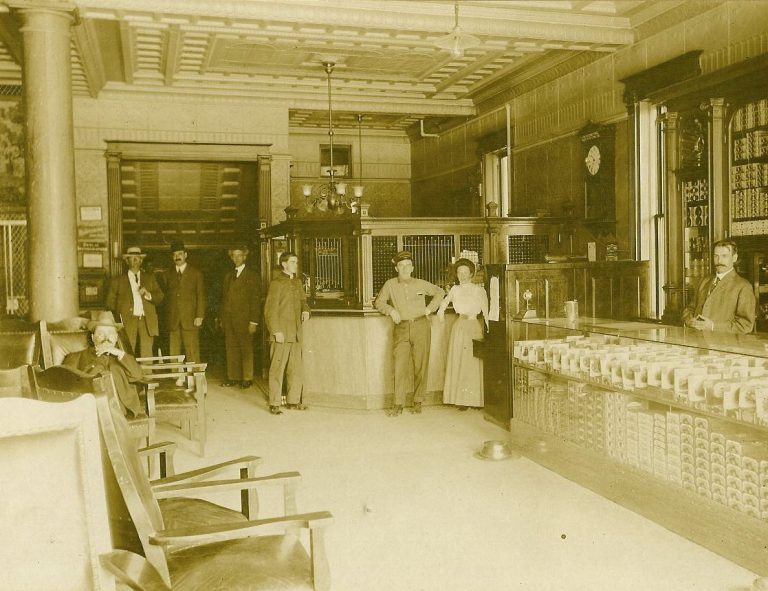

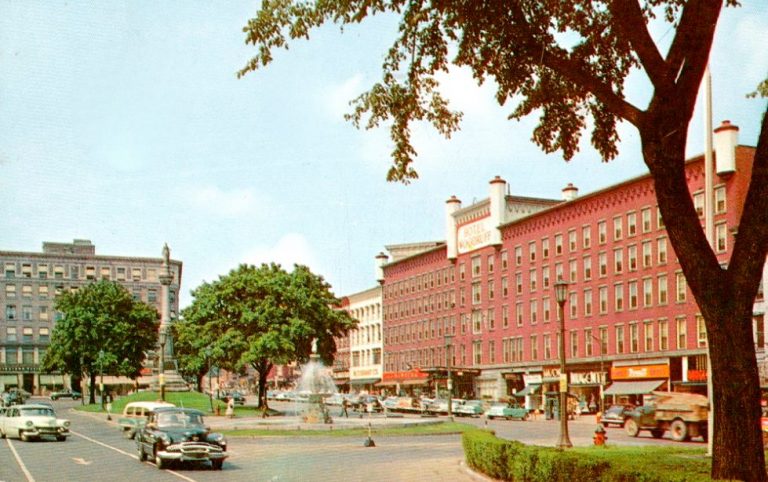
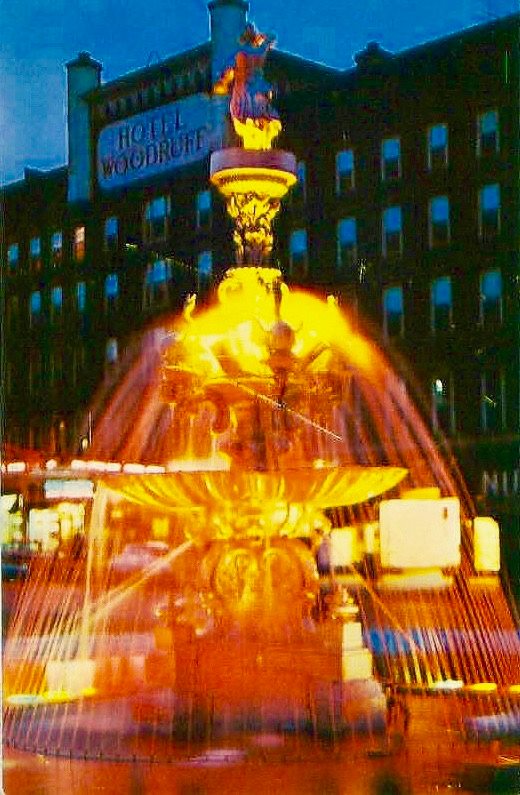
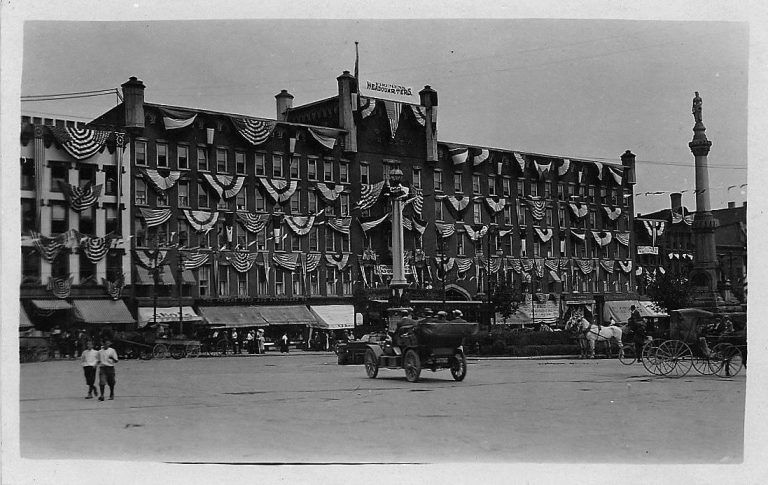
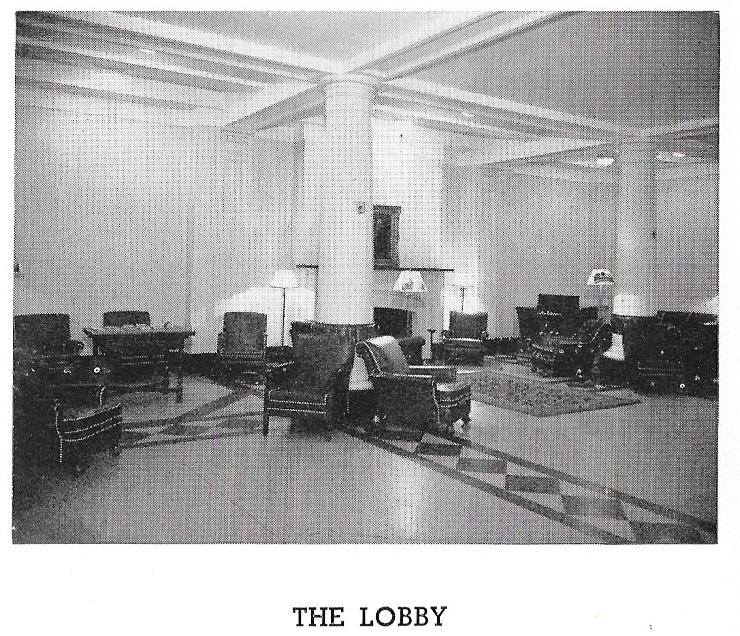
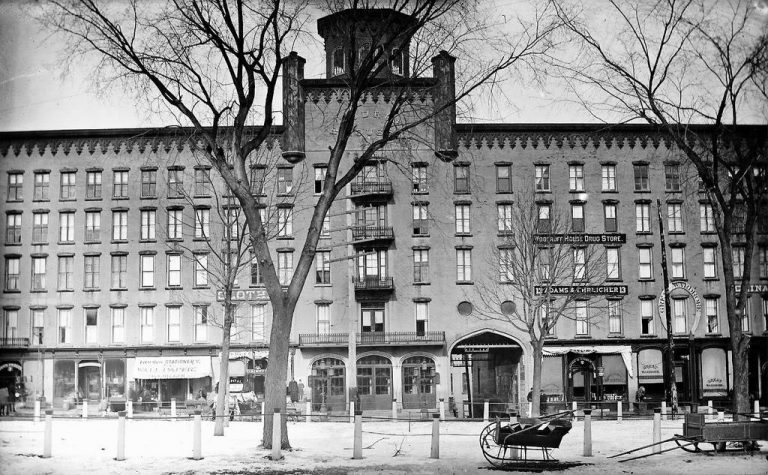
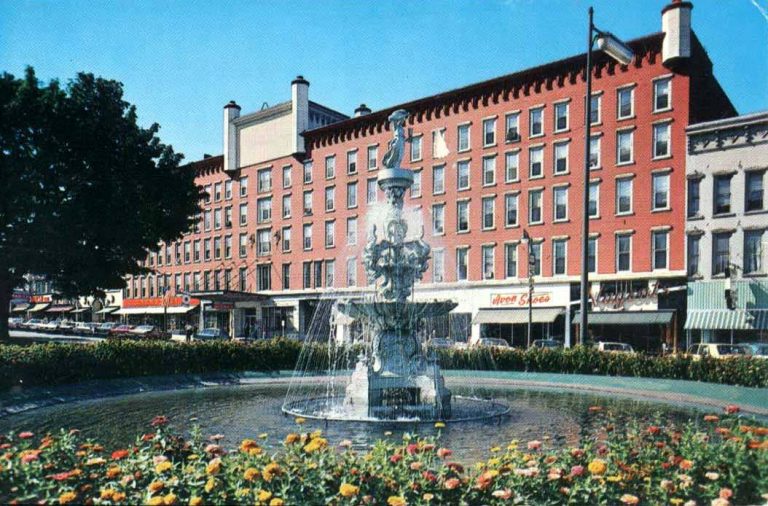
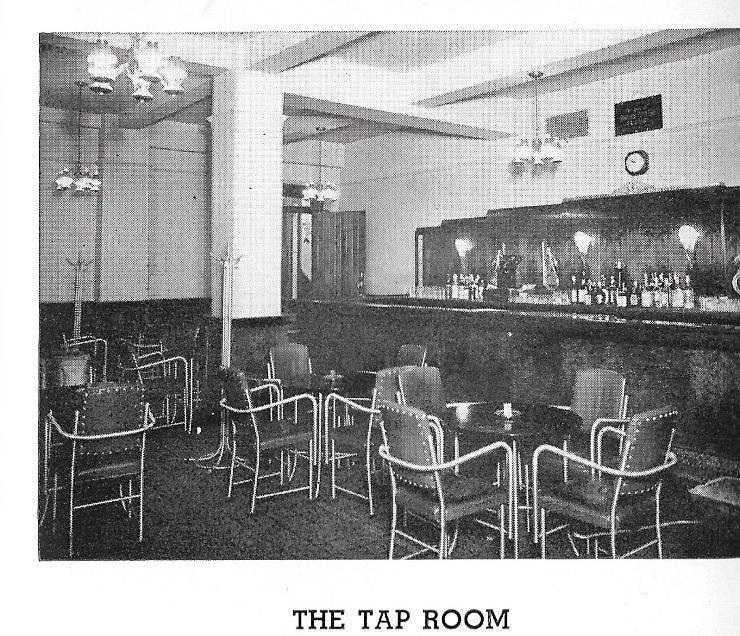
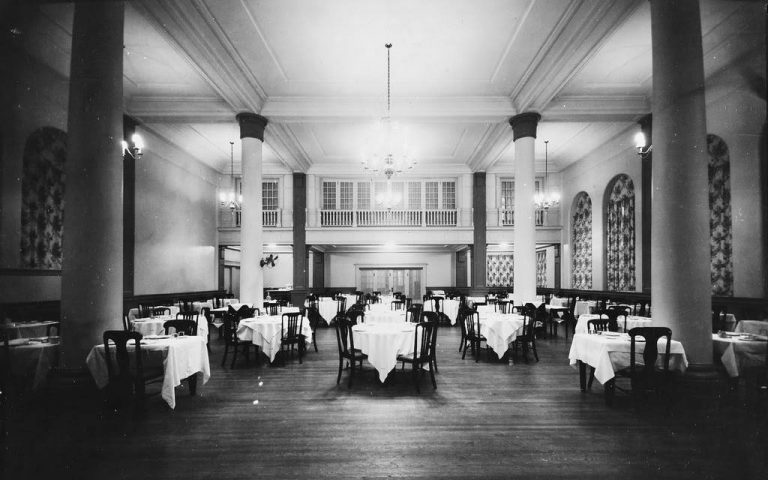
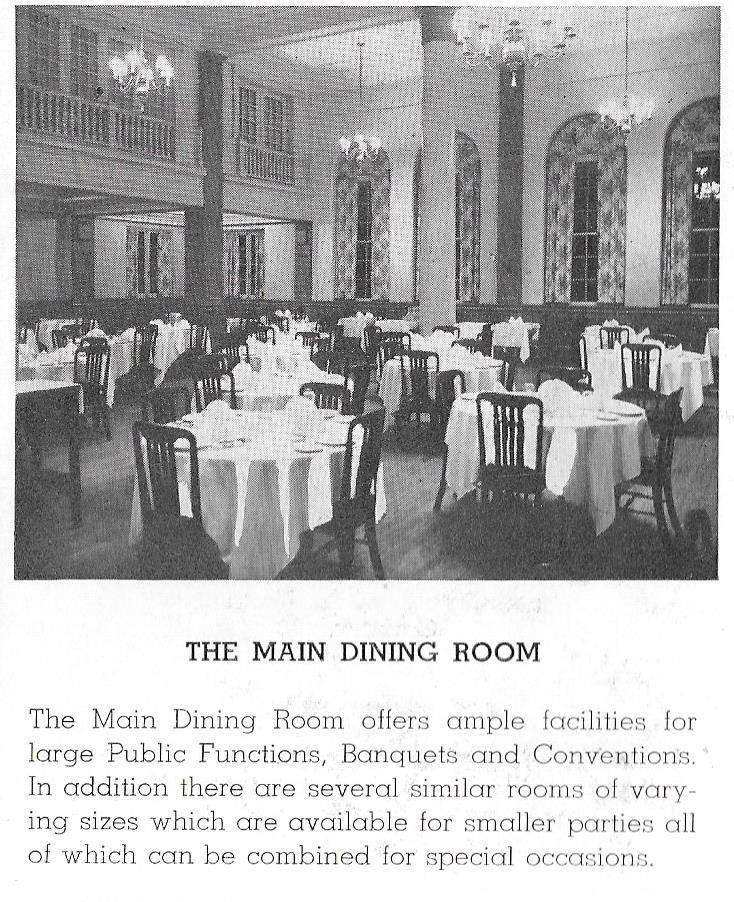
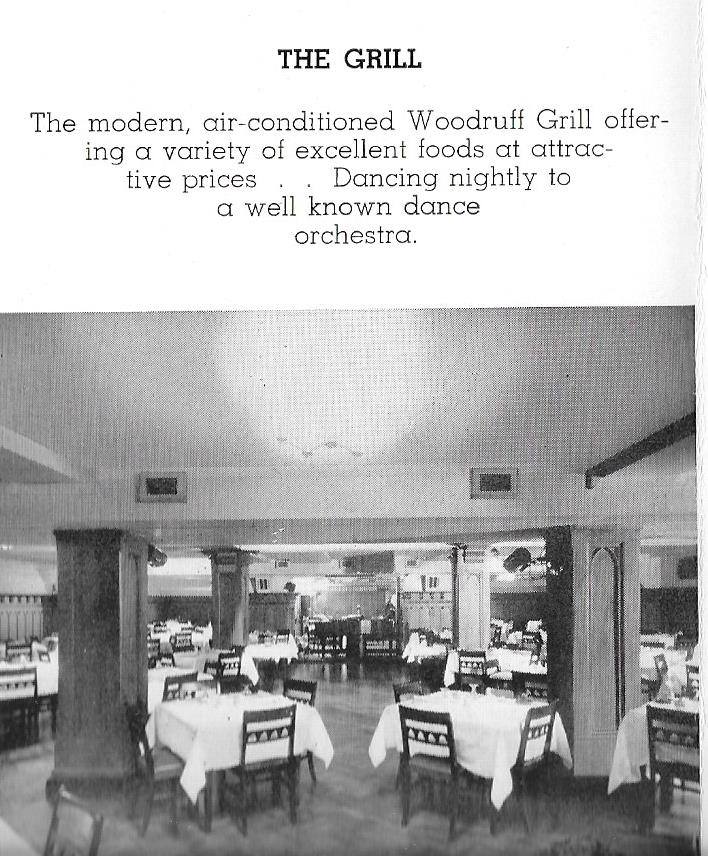
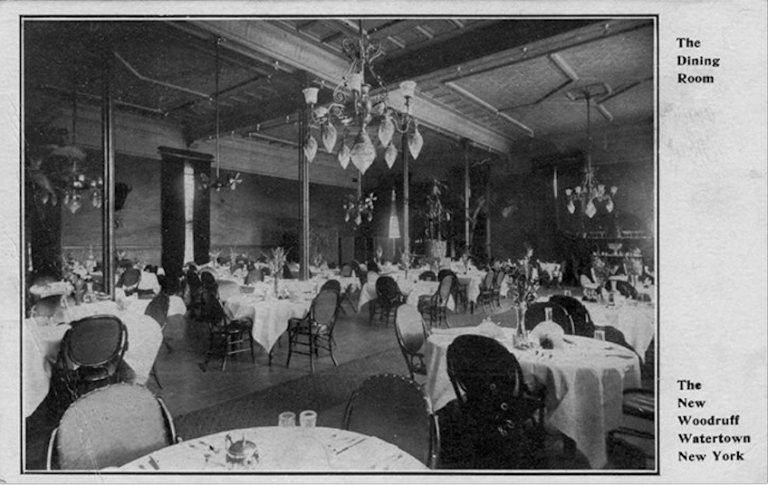
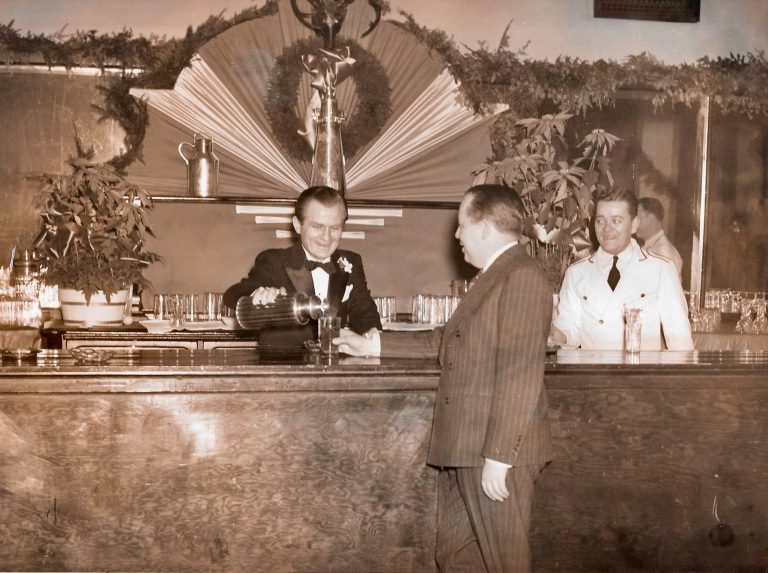
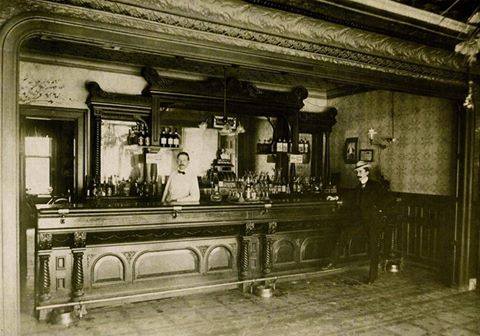
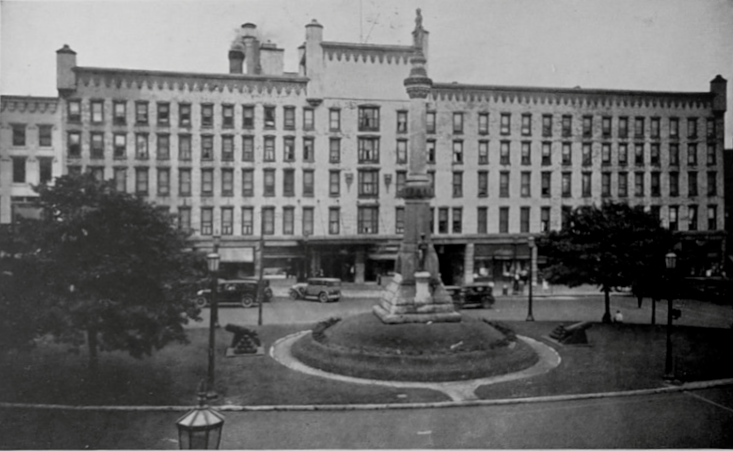
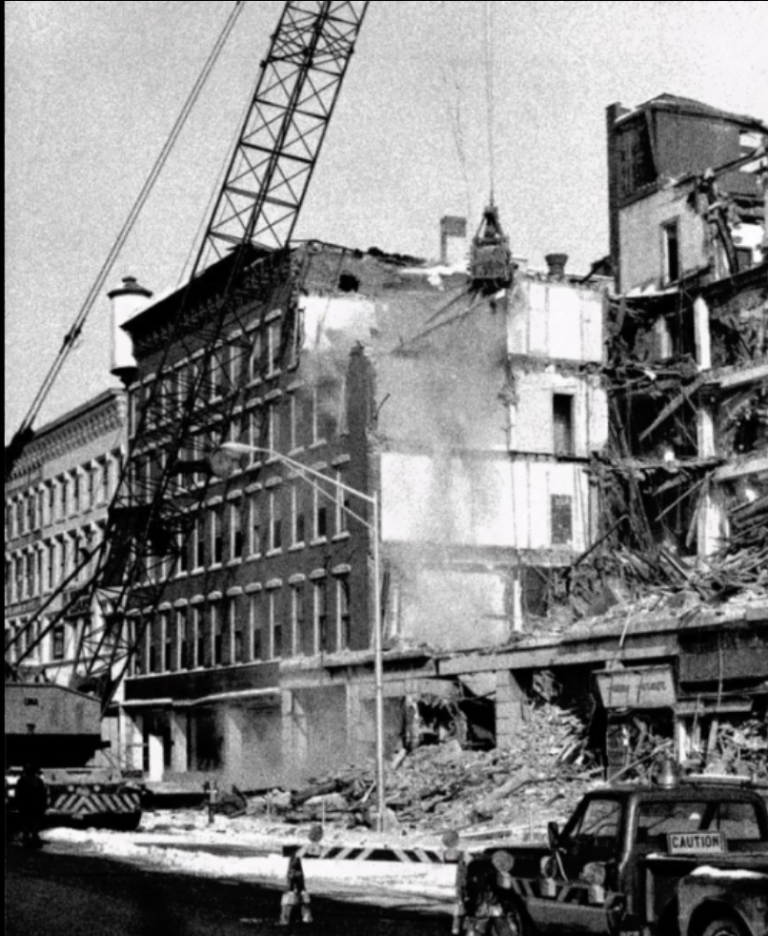

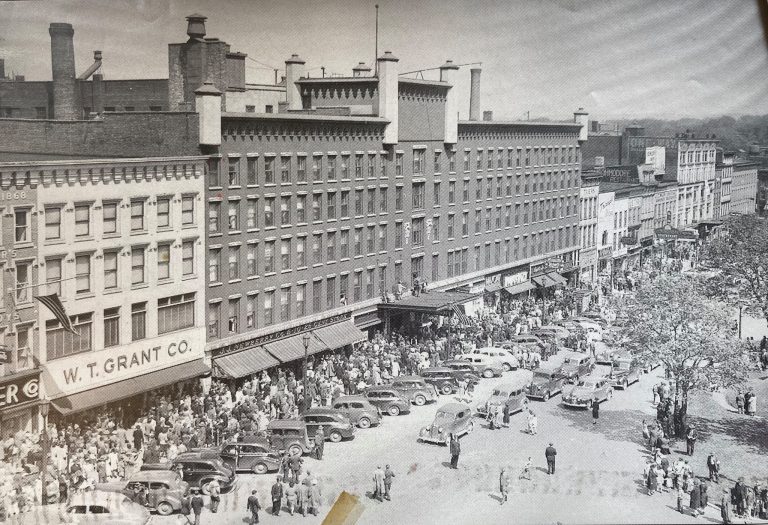
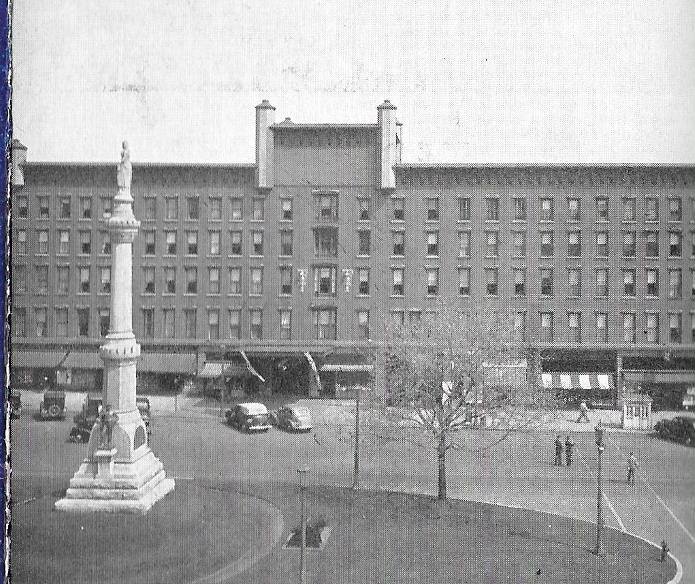
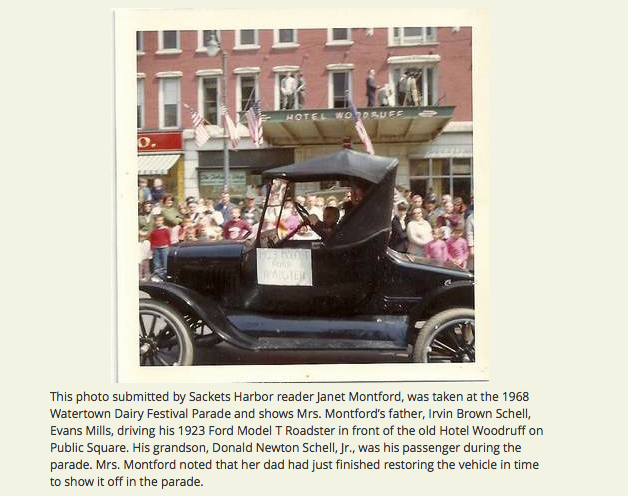
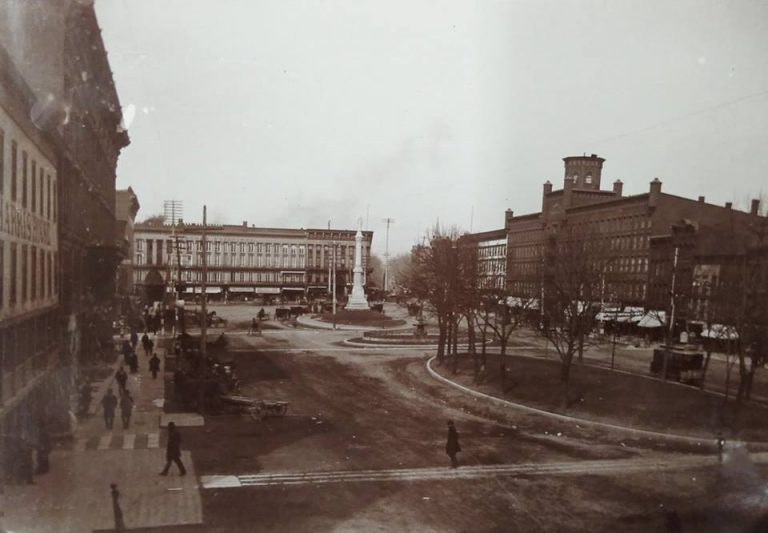
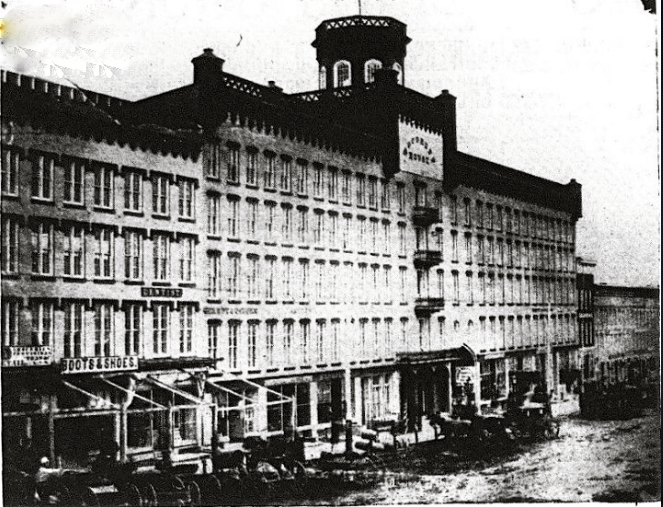
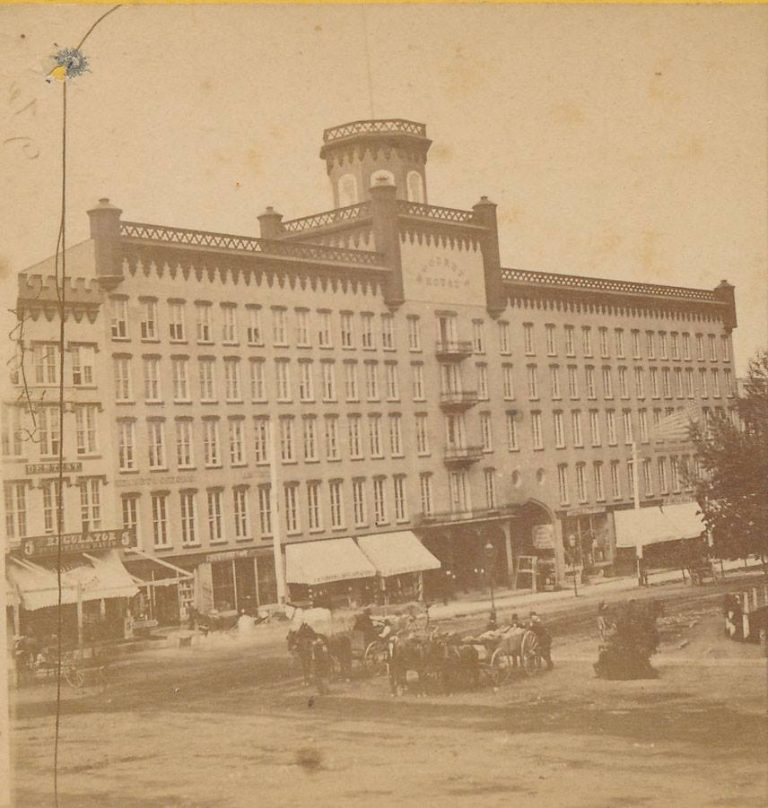
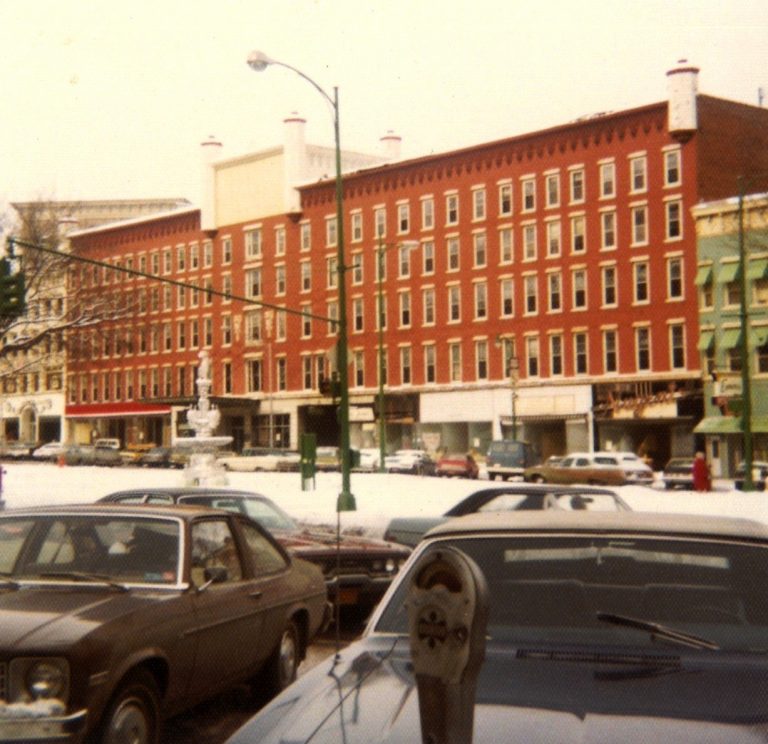

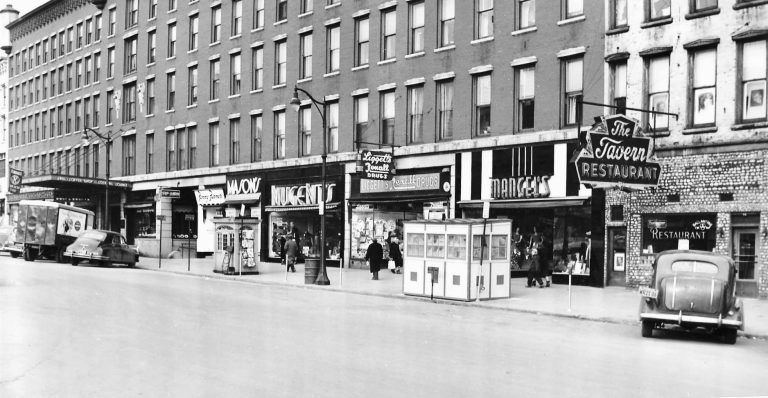


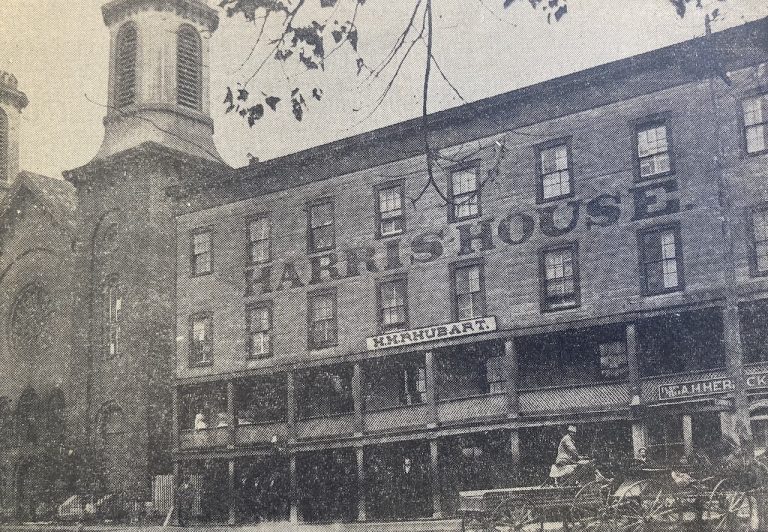
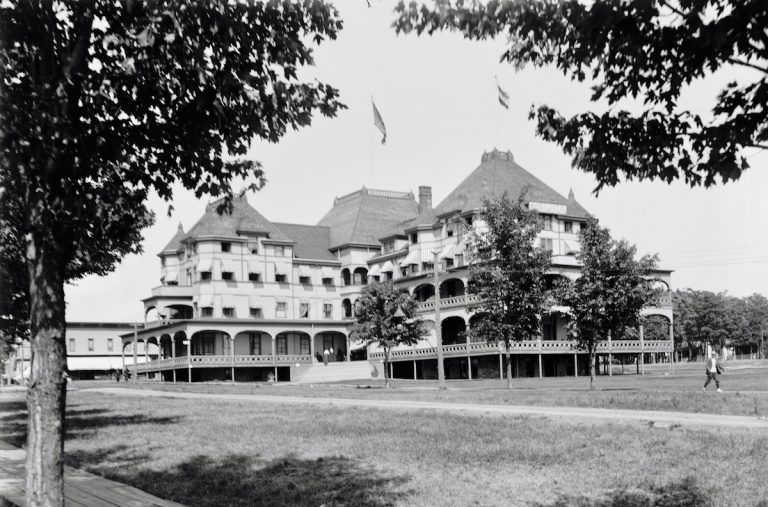
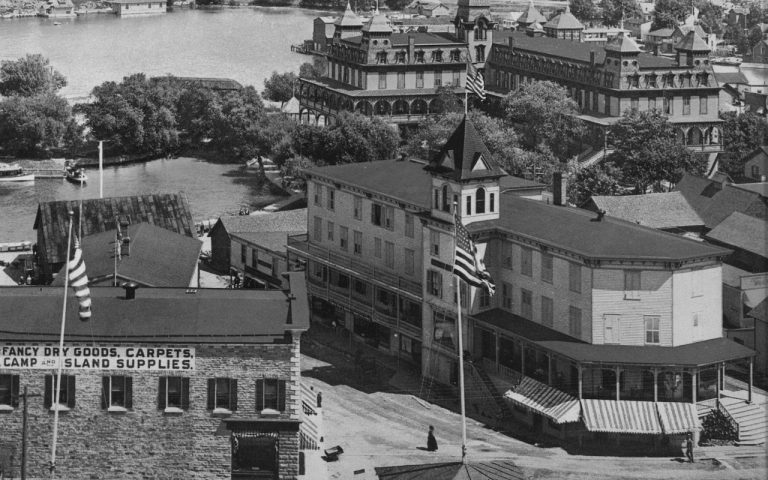

2 Reviews on “Hotel Woodruff (1851 – 1976)”
These are photos I took just before demolition and during.
Great! Thank you for contributing! They automatically get added to the gallery, too.
It should be noted that the hotel’s ownership paid for the building’s demolition, NOT the taxpayers of Watertown. This responsibility has been shirked by so many owners of property–large and small, residential and commercial–in subsequent years causing the city a major “Zombie Properties” problem in the 2018+ years.
Thanks for mentioning that, I’ll update it here shortly.